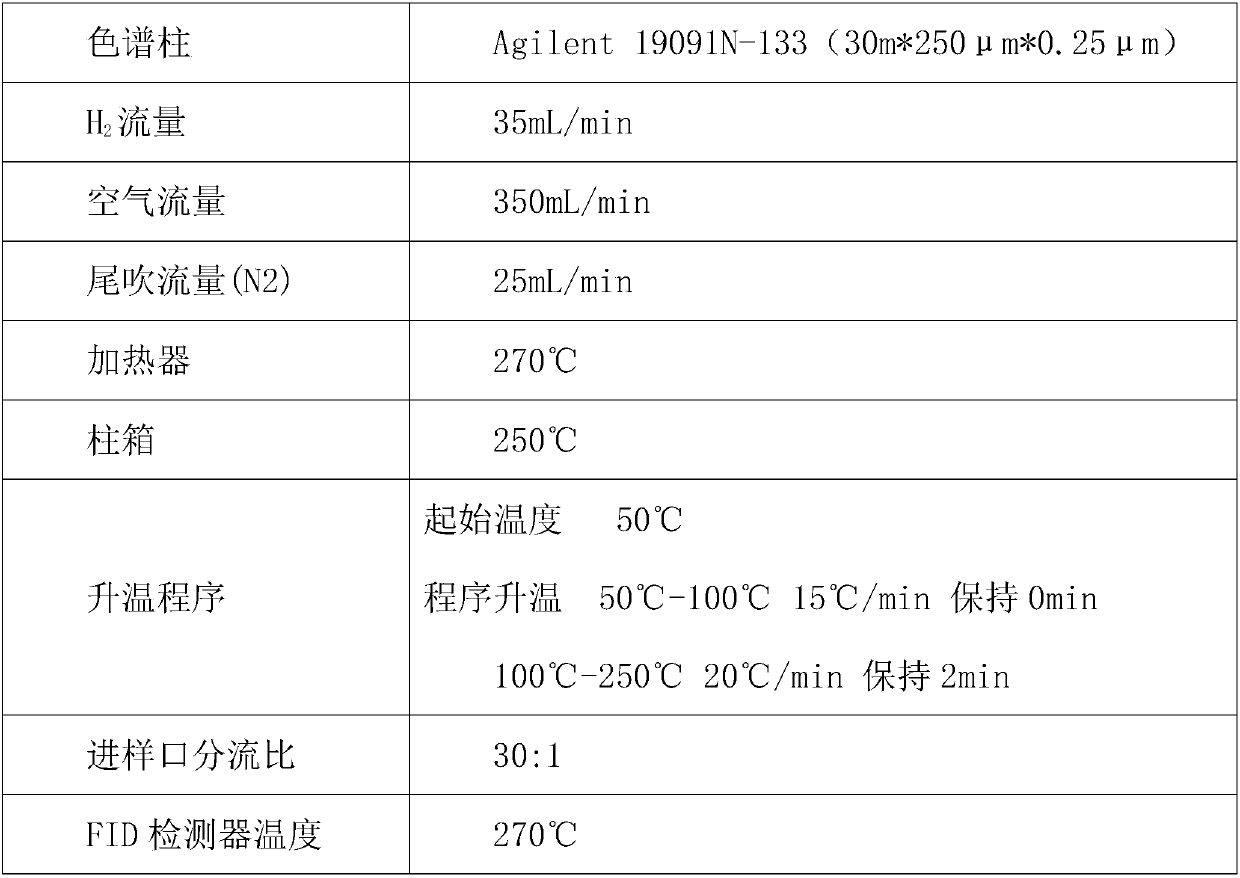Preparation method and application of propylene epoxidation catalyst
A catalyst and epoxidation technology, applied in the direction of catalyst activation/preparation, physical/chemical process catalyst, metal/metal oxide/metal hydroxide catalyst, etc., can solve the problem of high price, non-recyclable template agent, high catalyst cost, etc. problem, to achieve the effect of reducing decomposition, improving selectivity, and high particle strength
- Summary
- Abstract
- Description
- Claims
- Application Information
AI Technical Summary
Problems solved by technology
Method used
Image
Examples
Embodiment 1
[0048] Dissolve 208g of ethyl orthosilicate in 792g of isopropanol, then add 1.67g of formic acid as a hydrolysis catalyst, add 10.8g of deionized water dropwise, react at 50℃ for 1h, record it as liquid A; weigh 8.5g of titanate After the butyl ester is dissolved in 19.8g isopropanol, add it dropwise to solution A, stir evenly, and record it as solution B; weigh 0.067g NH 4 ReO 4 And 0.17gZnCl 2 Dissolve in 25.2g deionized water, add dropwise to B solution, stir evenly, and record as C solution. The C liquid reacted for 4 hours to form a sol. The sol was sprayed into liquid ammonia using a centrifugal atomizer to form, and then the sol was expanded at 80°C for 15 hours. The expanded catalyst precursor was dried in an oven at 80°C for 2h, and calcined in a muffle furnace at 550°C for 3h. The calcined sample is subjected to gas phase silanization: 3g of hexamethyldisilazane is added to the vaporization tank, the heating temperature of the vaporization tank is 130℃, and N 2 Bring...
Embodiment 2
[0051] Dissolve 249.6g of ethyl orthosilicate in 750.4g of isopropanol, then add 2.5g of formic acid as a hydrolysis catalyst, add 21.6g of deionized water dropwise, react at 60°C for 90min, record it as liquid A; weigh out 17.85g of titanium After dissolving tetrabutyl ester in 26.78g isopropanol, add it dropwise to solution A, stir evenly, and record it as solution B; weigh 0.422g NH 4 ReO 4 And 0.714gZnCl 2 Dissolve in 21.6g deionized water, add dropwise to B solution, stir evenly, and record as C solution. Liquid C reacts for 2 hours to form a sol. The sol is sprayed into liquid ammonia using a centrifugal atomizer to form, and then the sol is expanded at 120°C for 6 hours. The expanded catalyst precursor was dried in an oven at 100°C for 3 hours, and calcined in a muffle furnace at 450°C for 5 hours. The roasted sample is subjected to vapor phase silanization: 7.2g of hexamethyldisilazane is added to the vaporization tank, the heating temperature of the vaporization tank i...
Embodiment 3
[0054] Dissolve 291.2g of ethyl orthosilicate in 707.8g of isopropanol, then add 4.36g of acetic acid as a hydrolysis catalyst, add 50.4g of deionized water dropwise, react at 70°C for 140min, record it as liquid A; weigh 29.75g of titanium After dissolving 29.75g of isopropanol, tetrabutyl ester was added dropwise to A solution, stirred evenly, and recorded as B solution; Weigh 1.172g NH 4 ReO 4 And 1.785gZnCl 2 Dissolve in 10.08g deionized water, add dropwise to B solution, stir evenly, and record as C solution. The liquid C reacts for 1 hour to form a sol. The sol is sprayed into liquid ammonia using a centrifugal atomizer to form, and then the sol is expanded at 140°C for 3 hours. The expanded catalyst precursor was dried in an oven at 120°C for 5 hours, and calcined in a muffle furnace at 600°C for 2 hours. The calcined sample is subjected to vapor phase silanization: 12.6g of hexamethyldisilazane is added to the vaporization tank, the heating temperature of the vaporizati...
PUM
| Property | Measurement | Unit |
|---|---|---|
| specific surface area | aaaaa | aaaaa |
| pore size | aaaaa | aaaaa |
| specific surface area | aaaaa | aaaaa |
Abstract
Description
Claims
Application Information
 Login to View More
Login to View More - R&D
- Intellectual Property
- Life Sciences
- Materials
- Tech Scout
- Unparalleled Data Quality
- Higher Quality Content
- 60% Fewer Hallucinations
Browse by: Latest US Patents, China's latest patents, Technical Efficacy Thesaurus, Application Domain, Technology Topic, Popular Technical Reports.
© 2025 PatSnap. All rights reserved.Legal|Privacy policy|Modern Slavery Act Transparency Statement|Sitemap|About US| Contact US: help@patsnap.com

